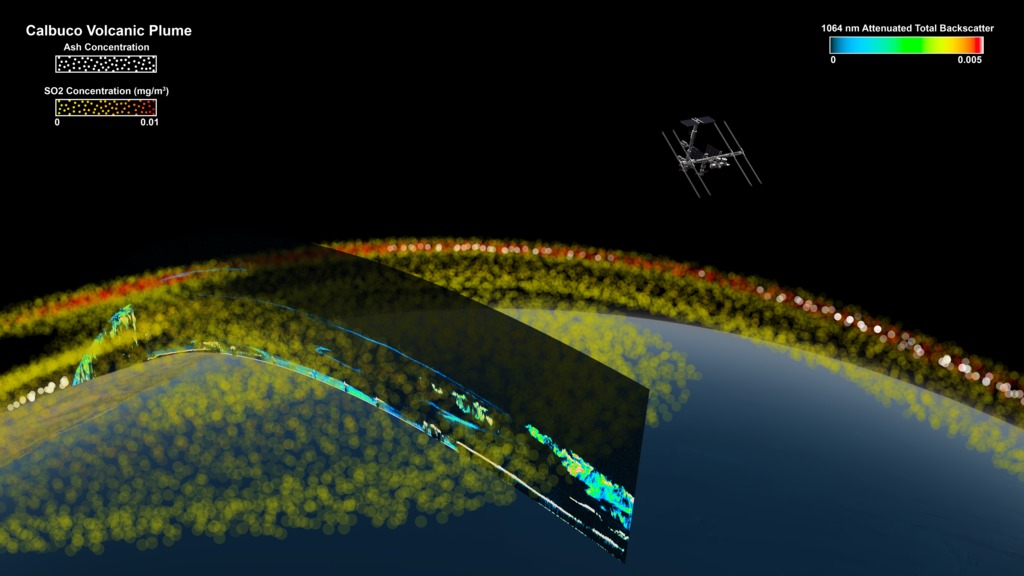CATS Eyes on the Atmosphere

See the atmosphere through CATS's eyes.
From 2015 to 2017, NASA had a specialized laser mounted on the International Space Station (ISS) 250 miles above Earth. NASA’s Cloud-Aerosol Transport System, or CATS, instrument was designed to study clouds and particles like dust and smoke in Earth’s atmosphere. To see the atmosphere from top to bottom, CATS's laser made measurements in "curtains," vertical slices of the atmosphere that showed what was happening at all altitudes. This view gave scientists information rapidly on spiraling hurricanes clouds and ash spewing from wildfires and volcanic erruptions, which has helped in forecasting and monitoring of these events. For example, in April 2015, the Calbuco Volcano in Chile erupted sending ash and sulfur dioxide into the atmosphere. As the ISS was passing overhead, CATS measured the height of the volcanic plume, a critical measurement needed to decide where to ground airplanes that can be damaged by ash in flight. Watch the videos to learn about other events witnessed by CATS.
CATS aboard the ISS passed over a plume of ash and sulfur dioxide from the Calbuco volcanic eruption in Southern Chile.
Above the wildfires in Oregon, CATS saw the sources of fire as well as transported smoke.

In 2016, as Hurricane Matthew closed in on the coast of Florida, CATS captured different cloud regions within the storm.

Over northern Africa, particles - likely dust kicked up by Saharan windstorms - reached heights of 2.5 to 3 miles.

The CATS instrument mounted on the outside of the ISS monitored Earth’s atmosphere from Jan. 2015 to Oct. 2017.
For More Information
See NASA.gov
Credits
Please give credit for this item to:
NASA's Scientific Visualization Studio
-
Animator
- Kel Elkins (USRA)
-
Producer
- Michael Starobin (KBR Wyle Services, LLC)
-
Scientist
- John E. Yorks (SSAI)
-
Writer
- Jordan Rice (Intern)
Release date
This page was originally published on Monday, January 8, 2018.
This page was last updated on Wednesday, May 3, 2023 at 1:47 PM EDT.
